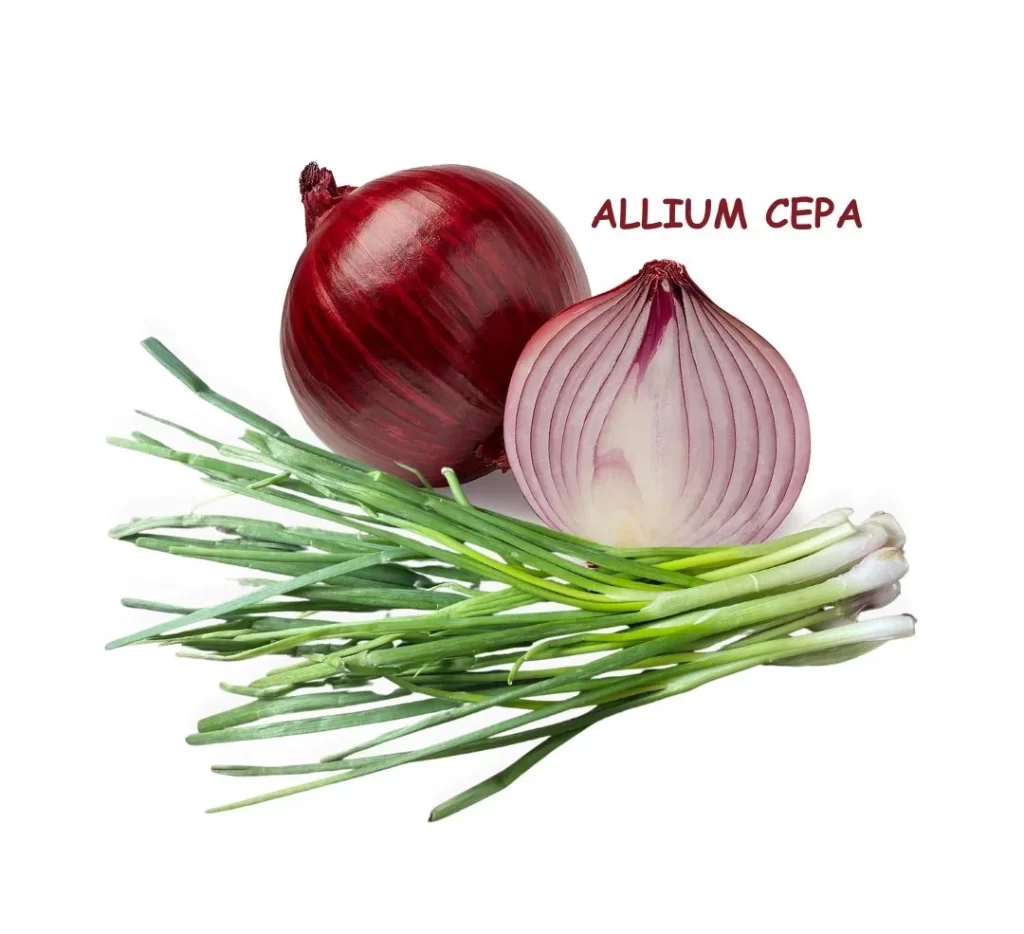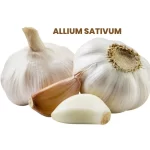Discover the therapeutic potential of Allium cepa, commonly known as Onion, a versatile remedy with applications in homeopathy and traditional medicine.
Derived from the bulb of the onion plant, this remedy is renowned for its effectiveness in treating various ailments, from colds and coughs to inflammatory conditions and neuralgic pain.
READ AN INTERESTING POST ON HISTORY OF MEDICINE IN DETAIL.
Explore its clinical uses, unique characteristics, and mode of action to harness its healing benefits
PROVER-HERING

Table of Contents
ToggleDOCTRINE OF SIGNATURE OF ALLIUM CEPA
The Doctrine of Signatures suggests that the appearance of plants can indicate their potential healing properties. In the case of Allium cepa, commonly known as Onion, its distinctive appearance holds significance in this doctrine.
The onion bulb consists of multiple layers or skins, with a pungent odor and a characteristic taste. According to the Doctrine of Signatures, the layered structure of the onion bulb, resembling the layers of tissue in the human body, suggests its potential to address conditions related to the respiratory and mucous membranes.
Furthermore, the tearing or watery eyes that occur when cutting onions are believed to mirror the symptoms of allergies, colds, and hay fever, indicating the plant’s potential to alleviate these conditions. Additionally, the pungent odor and taste of onions are thought to stimulate the mucous membranes, making them effective in clearing nasal congestion and promoting expectoration in respiratory ailments.
Overall, the Doctrine of Signatures suggests that the appearance and properties of Allium cepa reflect its potential therapeutic effects on respiratory and mucous membrane-related conditions, making it a valuable remedy in herbal medicine.
SOURCE INFORMATION
- Botanical Name: Allium cepa
- Common Name: Onion
- Family: Amaryllidaceae
- Part Used: Bulb
Onion, scientifically known as Allium cepa, is a widely cultivated vegetable belonging to the Amaryllidaceae family.
The bulb of the onion plant is the part primarily used for medicinal and culinary purposes.
Onions have been an integral part of various cuisines globally and have also found application in traditional medicine for their potential health benefits.
The distinctive aroma and taste of onions are attributed to sulfur-containing compounds.
Geographic Origin: Onions are cultivated in different regions worldwide and have a long history of use in diverse cultures.
Active Compounds: Onions contain bioactive compounds such as flavonoids, organosulfur compounds (including allicin), and antioxidants. These compounds contribute to the characteristic taste and potential health-promoting properties of onions.
Traditional Uses: Onions have been traditionally used for their culinary attributes, adding flavor to a variety of dishes.
Medicinally, onions have been explored for their anti-inflammatory, antioxidant, and antimicrobial properties.
CLINICAL
Allium Cepa is used in the treatment of various conditions such as catarrh, cold, coryza (runny nose), cough, diarrhea, influenza, injuries, laryngitis, nasal polyps, throat affections, whooping cough, and more.
SPHERES OF ACTION
This remedy primarily acts on the conjunctiva (the mucous membrane covering the front of the eye), mucous membrane of the nose, respiratory tract, intestine, nerves, and veins.
PATHOGENESIS
Allium Cepa induces irritation of the conjunctiva and mucous membrane of the nose, respiratory and gastrointestinal tracts, leading to acute catarrhal inflammation and profuse discharge.
It also causes neuralgia (nerve pain) and inflammation of veins.
CONSTITUTION
As Allium Cepa is primarily used as an acute remedy, the consideration of the patient’s constitutional type is not as crucial.
However, it is noted that patients requiring this remedy tend to be very hot, and the background miasm is often Psoric.
WHAT IS CONSTITUTION IN HOMOEOPATHY?
GUIDING SYMPTOMS
Allium cepa is a homeopathic remedy primarily affecting the left side of the body, with symptoms typically progressing from the left to the right.
It is particularly indicated for conditions like common cold, cough, or headache, where symptoms worsen in a warm room, improve in open air, and aggravate upon returning to a warm environment.
Key features of Allium cepa include:
- Nasal and Ocular Symptoms
- It is associated with a copious and acrid nasal discharge, accompanied by abundant bland tearing of the eyes.
- This distinguishes it from Euphrasia, where nasal discharge is bland, and eye tearing is acrid.
- Craving for Raw Onion
- A notable indication for using Allium cepa is the patient’s desire for raw onion, which aligns with the remedy Cubeb.
- Aggravation and Relief Patterns
- Symptoms worsen in a warm room and during the evening but find relief in a cold room and open air.
- Laryngeal Affliction
- The remedy is linked to violent laryngitis, where the cough appears to tear and split the larynx.
- Neuralgic Pain and Traumatic Conditions:
- Allium cepa proves effective in relieving neuralgic pain resembling a long thread, especially following amputations, or nerve injuries.
- Thread-like pain in various body parts is a characteristic feature.
- Ailments From Specific Causes
- Conditions may arise from exposure to damp north-western cold wind, the adverse effects of getting wet, and the consumption of salad and cucumber.
Allium cepa presents a clinical picture of coryza with acrid nasal discharge and laryngeal symptoms.
It is especially suited to phlegmatic individuals experiencing colds in damp, cold weather.
The remedy demonstrates efficacy in alleviating neuralgic pain and burning sensations in various body parts, making it a valuable option in homeopathic practice.
PARTICULARS
Headache
- Catarrhal dull headache accompanies coryza, worsening in a warm room, improving in open air, and worsening again upon returning to warmth.
Eyes
- Eyes experience burning, biting, and smarting sensations, as if from smoke.
- The patient feels compelled to rub them for relief.
- Excessive lachrymation (tearing) occurs, but it is profuse and bland.
Nose
- Nasal discharge is profuse, watery, and acrid, capable of causing excoriation on the touched parts.
- The discharge drops from the tip of the nose. Nasal polyps may also be present in the patient.
Coryza
- Spring coryza occurs after exposure to damp north-western wind.
- Discharges burn and corrode the nose and upper lip.
- Catarrhal laryngitis leads to a severe cough that makes the patient grasp the larynx, as if the cough would tear it.
Modalities
- Symptoms of headache, eyes, nose, and coryza worsen in the evening and in a warm room but find relief in the open air and in a cold room.
Colic
- Allium cepa patients may experience colic, typically triggered by cold exposure, getting feet wet, overeating, consumption of cucumbers or salads, hemorrhoids, or in children.
- Colic worsens when sitting and improves with movement.
Injury
- For neuralgia resembling a long thread on the face, hand, neck, or chest, or for traumatic chronic neuritis with burning and stinging pain, Allium cepa is the appropriate remedy.
Phlebitis
- In cases of phlebitis, especially puerperal or after forceps delivery, where red streaks appear on the arm and pain leads to despair, Allium cepa is a valuable consideration.
Inflammation of Venous System
- Effective for sore and raw spots on the feet, especially the heel, caused by friction, particularly when the feet are rubbed sore.
GENERAL MODALITIES
Aggravation
- Predominantly worsens in the evening and in warm rooms (compare with Pulsatilla, improvement in open air, and Euphrasia).
Amelioration
- Finds relief in cold rooms and open air (similar to Pulsatilla).
WHAT ARE MODALITIES IN HOMOEOPATHY?
RELATIONS
- Complementary to Phosphorus, Pulsatilla, and Thuja.
- Compatible before Calcarea and Silicea in cases of polyps.
- Similar to Euphrasia, but coryza and lachrymation are opposite.
- Exhibits bad effects from getting wet (compare with Rhus toxicodendron).
Antidoted by
- Arnica, Chamomilla, Nux vomica, and Thuja.
DOSE
- Third potency is recommended.
Frequently Asked Questions
What is Allium Cepa and what is it used for in homeopathy?
- Allium Cepa, commonly known as Onion, is a homeopathic remedy derived from the onion plant. It is used to treat various conditions such as catarrh, cold, cough, influenza, laryngitis, nasal polyps, and more.
How does Allium Cepa work in the body?
- Allium Cepa induces irritation in mucous membranes, particularly in the eyes and nose. It triggers acute catarrhal inflammation, leading to profuse discharge. Additionally, it addresses neuralgia and inflammation of veins.
What are the guiding symptoms that indicate the need for Allium Cepa?
- Allium Cepa is indicated for conditions where symptoms progress from the left to the right side of the body. It is particularly effective for individuals experiencing worsening of symptoms in a warm room, improvement in open air, and aggravation upon returning to warmth.
What distinguishes Allium Cepa from other remedies like Euphrasia?
- Allium Cepa is associated with a copious and acrid nasal discharge, along with bland tearing of the eyes. This distinguishes it from Euphrasia, where nasal discharge is bland, and eye tearing is acrid.
Are there specific conditions or ailments that Allium Cepa is known to address effectively?
- Allium Cepa is known for its efficacy in treating conditions such as catarrh, cold, cough, diarrhea, influenza, laryngitis, nasal polyps, throat affections, and whooping cough.
How should Allium Cepa be dosed in homeopathic treatment?
- The recommended potency for Allium Cepa is the third potency. It is advisable to consult with a healthcare professional for personalized dosage guidance.
Is there a specific constitution or background miasm associated with patients requiring Allium Cepa?
- While Allium Cepa is primarily used as an acute remedy, patients requiring it tend to be very hot, and the background miasm is often Psoric.
Can Allium Cepa be used for neuralgic pain or traumatic conditions?
- Yes, Allium Cepa is effective in relieving neuralgic pain resembling a long thread, especially following amputations or nerve injuries. It is also indicated for traumatic chronic neuritis.
What are the modalities that influence the symptoms of Allium Cepa?
- Symptoms of headache, eyes, nose, and coryza worsen in the evening and in a warm room but find relief in the open air and in a cold room.
Are there any substances that antidote or complement the action of Allium Cepa?
- Allium Cepa is complementary to Phosphorus, Pulsatilla, and Thuja. It is compatible before Calcarea and Silicea in cases of polyps. Arnica, Chamomilla, Nux vomica, and Thuja are known to be antidotes for Allium Cepa.
Note: The information provided here is based on general knowledge and should not be considered as medical advice. Consultation with a healthcare professional is recommended for specific health concerns and conditions.













Leave a Reply